The Hong Kong Dance Co marks its 45th year, and Bruce Lee’s 85th birth anniversary, with a new production — the latest in a series developed as part of a sustained research-based project that highlights the connections between Chinese martial-arts traditions and dance. Mariella Radaelli reports.
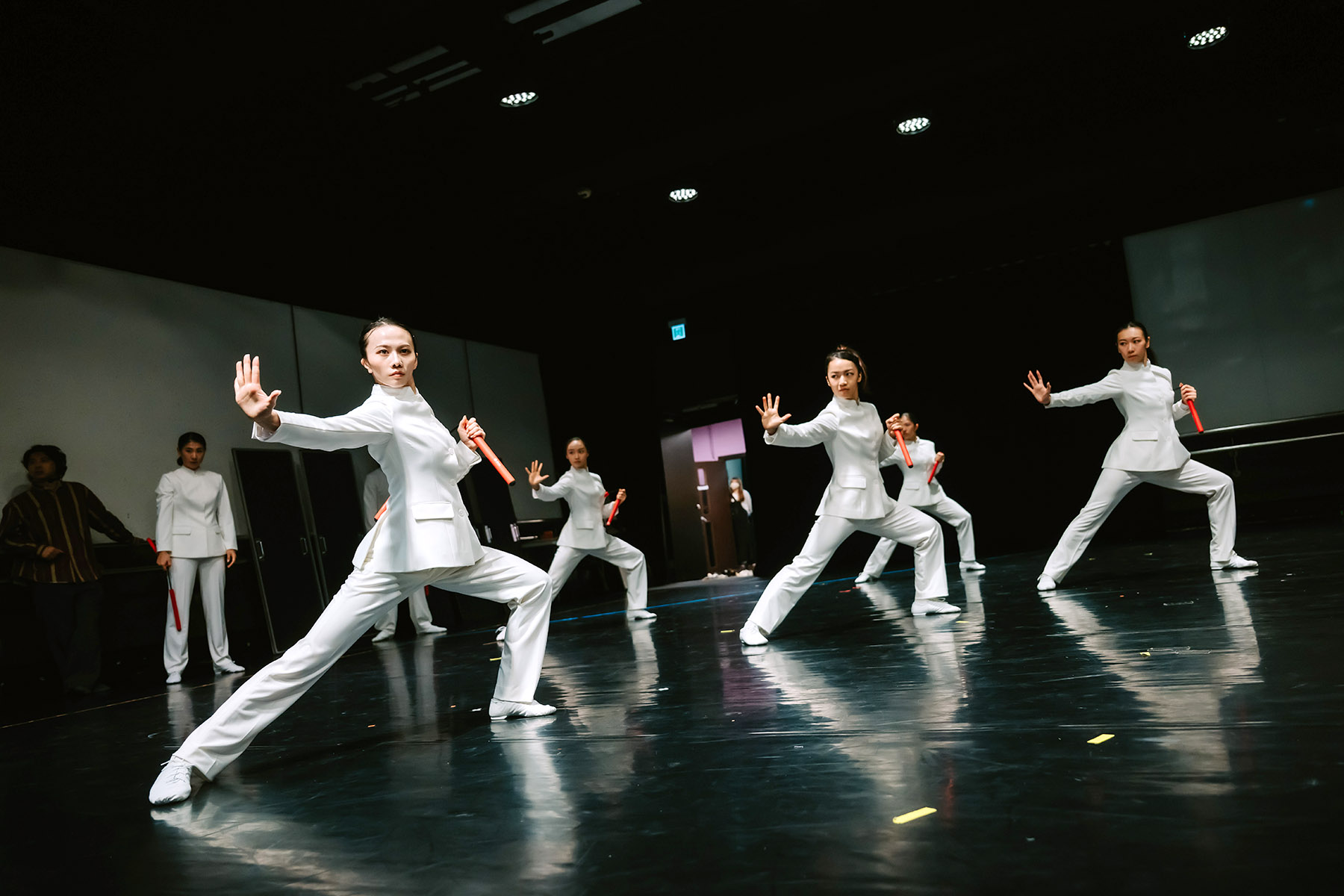
The Hong Kong Dance Co’s (HKDance’s) newest production celebrates two milestones — the company’s 45th year, and kung fu legend Bruce Lee’s 85th birth anniversary. Choreographer Yang Yuntao, who is also the artistic director of HKDance, has collaborated with renowned jazz composer Patrick Lui and award-winning art director Man Lim-chung to create a production that seeks to “reimagine” Lee’s larger-than-life persona. Titled Kung Fu Artistry — Bruce Lee’s No Way as Way, the show premiered at the Hong Kong Cultural Centre on Thursday.
It’s the latest in a series of martial arts-based shows staged by the company. However, Yang emphasizes that Kung Fu Artistry is the product of a creative approach that’s quite novel for HKDance, explaining it as “innovative integration of multimedia and jazz elements, woven together with martial-arts-inspired choreography to reflect Bruce Lee’s philosophy”.
READ MORE: Bruce Lee's legacy packs powerful punch
“We chose jazz as the musical foundation to illustrate Bruce Lee’s modernity,” says the choreographer. “Although rooted in martial arts, his philosophy was not conservative or rigid. Therefore, using jazz music effectively conveys Lee’s being an avant-garde and pioneer in his field.”
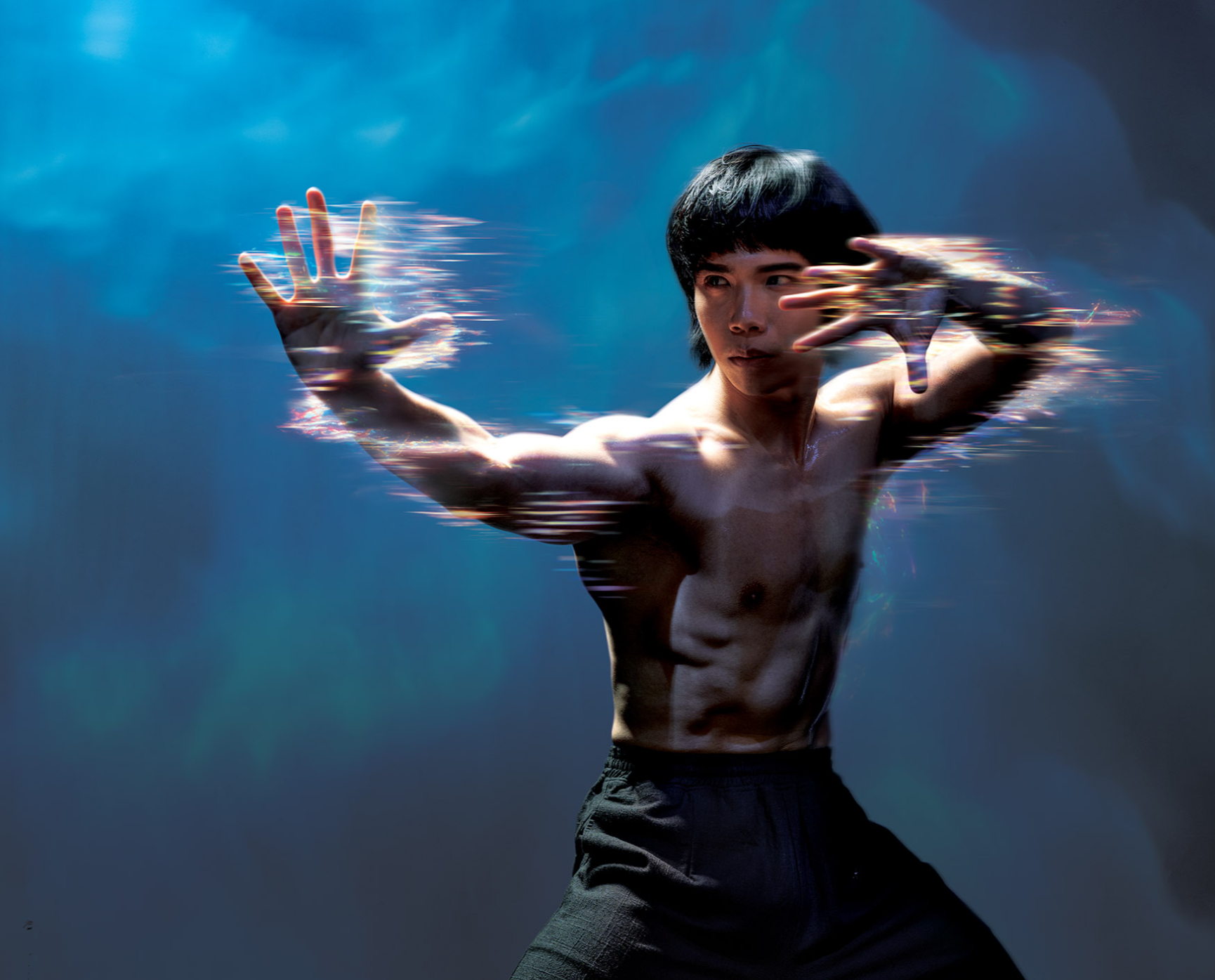
Steadfast against all odds
Kung Fu Artistry traces the significant moments from Lee’s rather short life (1940-73), highlighting his ability to follow the tenets of martial-arts philosophy through thick and thin. It also tells the story of how Lee developed the technique of Jeet Kune Do, a hybrid martial-arts form focused on quick counterattack that doesn’t allow the opponent to complete their opening salvo. Additionally, the piece pays tribute to Lee’s remarkable contributions to the film industries in Hong Kong and Hollywood.
The show has been blessed by Lee’s daughter, Shannon, and the Bruce Lee Foundation. “She appreciates that we’re honoring her father’s legacy through this cross-genre artistic creation,” Yang says.
Yang’s choreography draws inspiration from the letters Lee wrote to his friends, as well as Lee’s reflections — culled from posthumous publications and films starring him — on integrating traditional Chinese philosophy, including Taoist thought, into the teaching of martial arts.
“One key concept we’re expressing on stage is Lee’s idea of water — its formlessness and fluidity,” explains Yang. “We’re using abstract ink-inspired visuals to convey this, and experimenting with real water elements on stage. There’s a particular dance segment where this comes to life on stage quite vividly.”
The image also ties in with Lee’s iconic message — “Be water, my friend” — which advocates a readiness to adapt to all possible situations.
The choreography draws on Jeet Kune Do, karate, and the art of wielding the nunchaku — a traditional Chinese weapon consisting of two wooden sticks connected by a short metal chain. The imagery created on stage resonates with the gracefulness of Cantonese Opera, the vigor of Wing Chun — a form of kung fu involving hand-to-hand combat — and the aesthetic of traditional Chinese ink paintings.
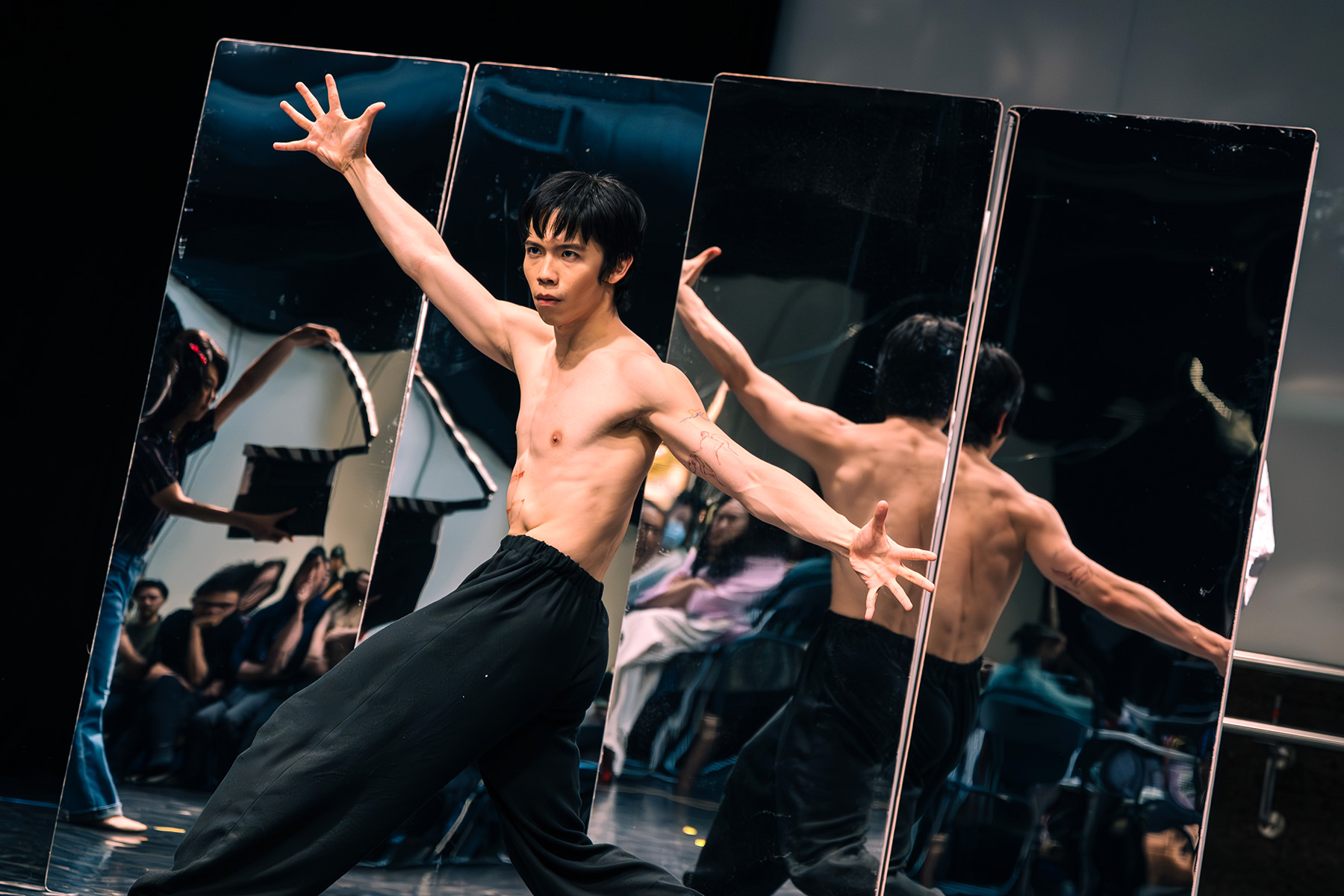
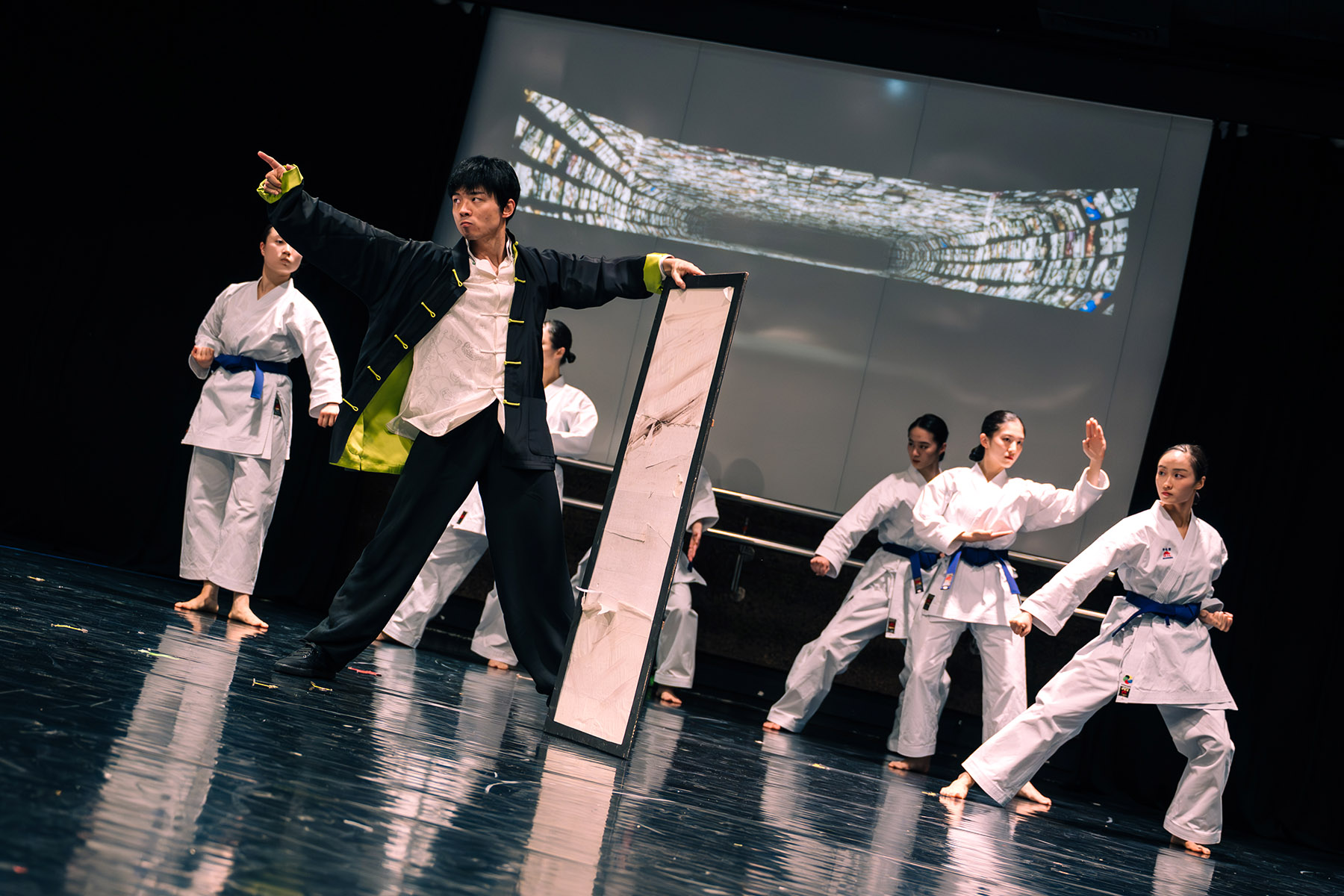
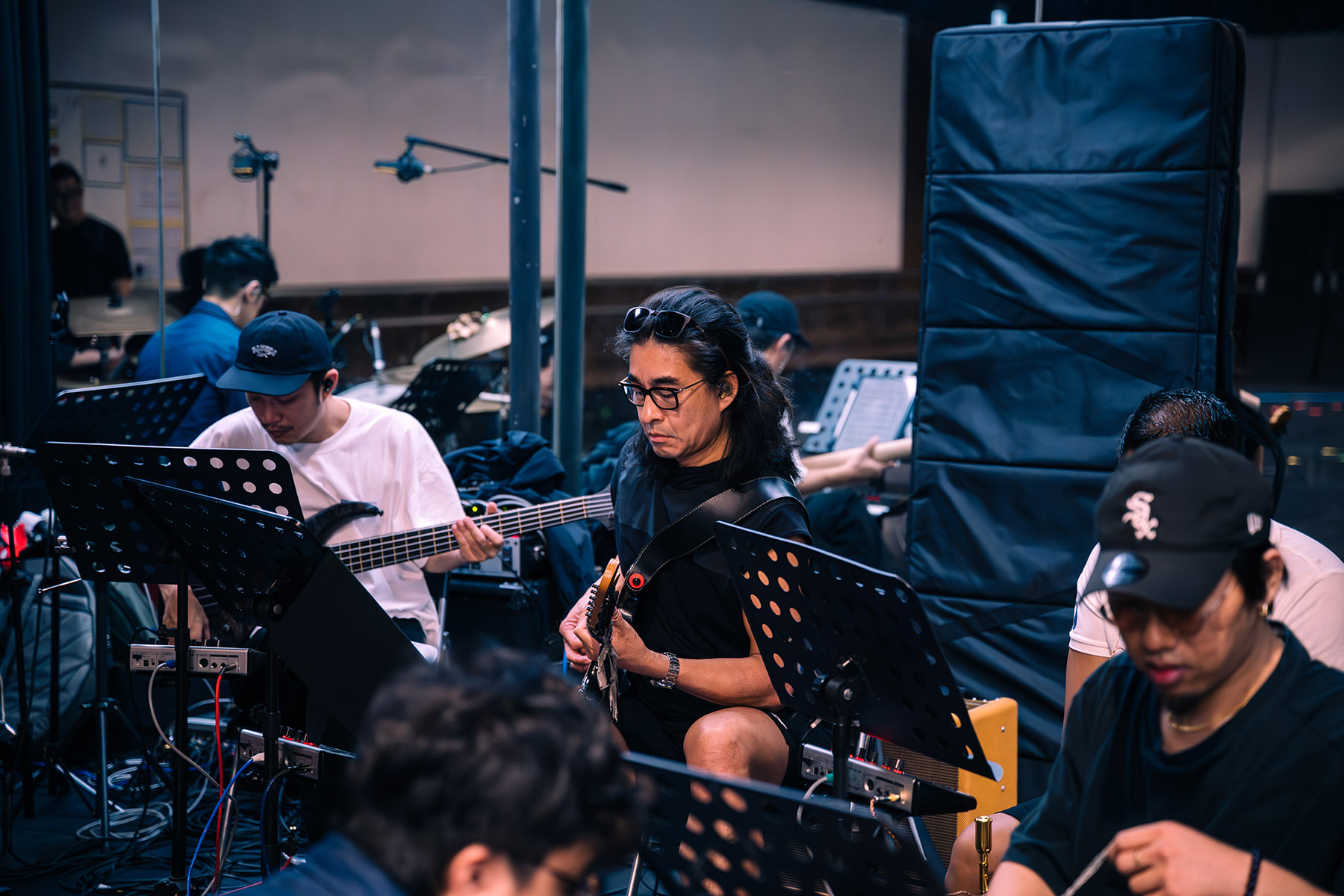
Essaying an iconic role
The title role is played by Huang Haiyun. He recalls that the first time he watched a martial-arts-based dance piece, he was struck by the concept of jin, or inner strength. “It’s not about striking a beautiful pose. Jin fills dance movements with internal energy and tension,” Huang says.
Prepping toward putting on Kung Fu Artistry involved daily training sessions in ballet, Chinese dance, contemporary dance, and martial arts. “I’ve lost track of how long each session lasts, but the training is intense,” says Huang.
He believes his deep and sustained engagement with martial-arts practice has transformed his dancing, elevating a physical experience to the realm of the spiritual and philosophical, helping him reconnect with his inner self and cultural heritage by moving his body in a certain way.
His hope is that the experience of watching the show leads some of the audience members to “a space for deeper reflection”. Prepping for the role had a similar effect on him. Huang found that practicing standing meditation during rehearsal breaks helped him find calm, slow down, and deliver his act with enhanced clarity.
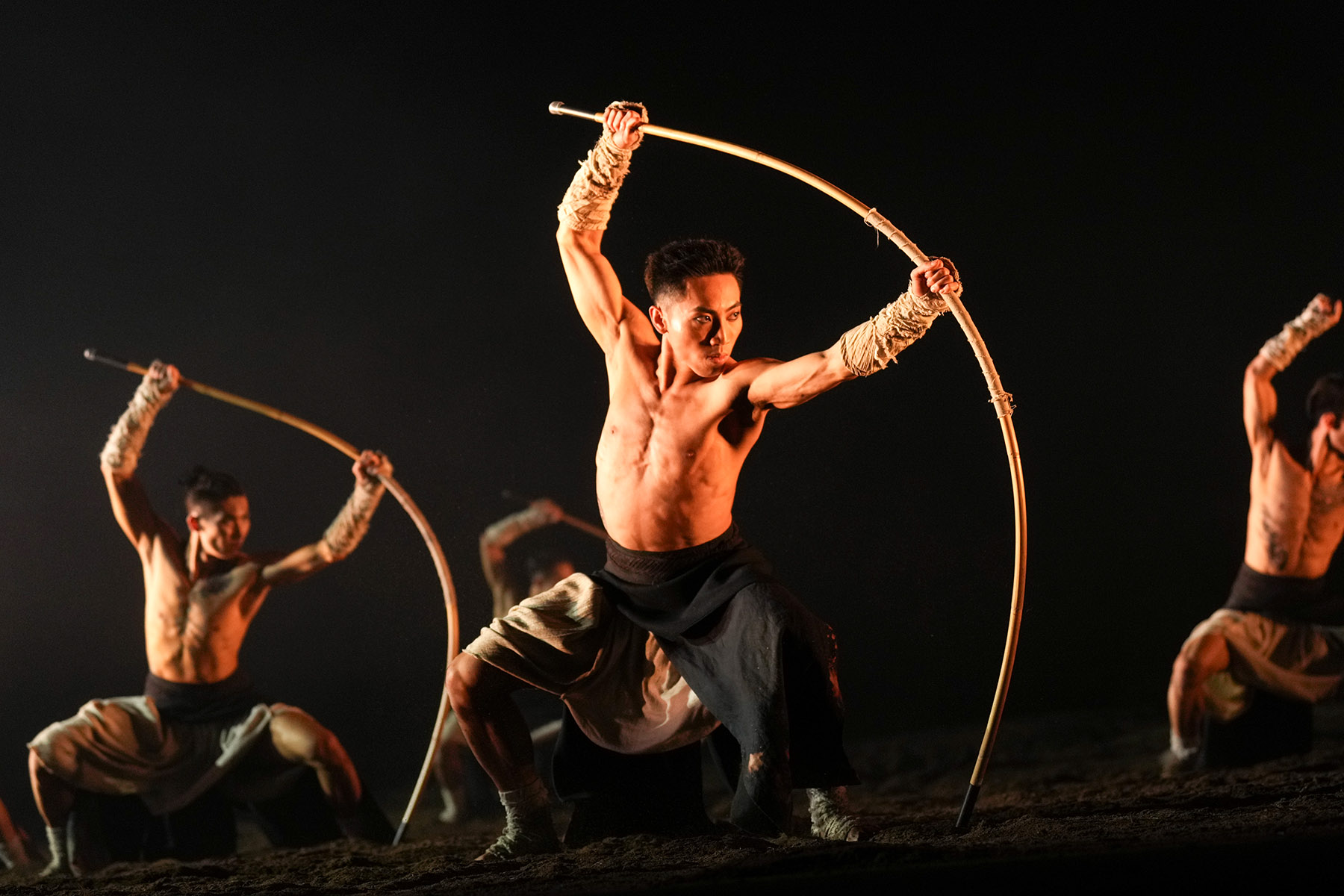
Research-led productions
Yang’s experiments with incorporating martial-arts elements into Chinese dance began years ago. Though he did not have much to do with martial arts during his time as a student of the School of Dance at the Minzu University of China, Yang was always drawn to martial arts because of “their place in our cultural heritage”. “As a Chinese dance artist, I felt it was essential to understand martial arts in greater depth,” he says.
“I’ve been exploring ways to cultivate a truly authentic Chinese physicality that naturally integrates martial arts and dance. My goal is to showcase dancers whose bodies have been shaped by martial-arts training, and through Kung Fu Artistry — as well as past productions — we aim to express a distinctive embodiment of traditional Chinese spirit and aesthetics.”
In 2018, Yang launched a three-year research project, as part of which esteemed martial-arts masters were invited to coach the company’s dancers. The initiative led to a steadily developing repertoire of martial arts-based productions, including Convergence (2020), Shan Shui: An Ode to Nature (2021), and most recently, The Legend of Lanling (2024).
The last of these is an epic tale inspired by a historic figure, Chinese military hero Gao Changgong (541-573). Legend has it that during battles, Gao hid his exceptionally handsome face under a fearsome mask in order to intimidate his enemies. His noble character and fierce fighting skills make him an epitome of the classic martial-arts hero.
“We seek stories — whether they are classic tales or familiar cultural motifs — that resonate with the audience,” Yang says.
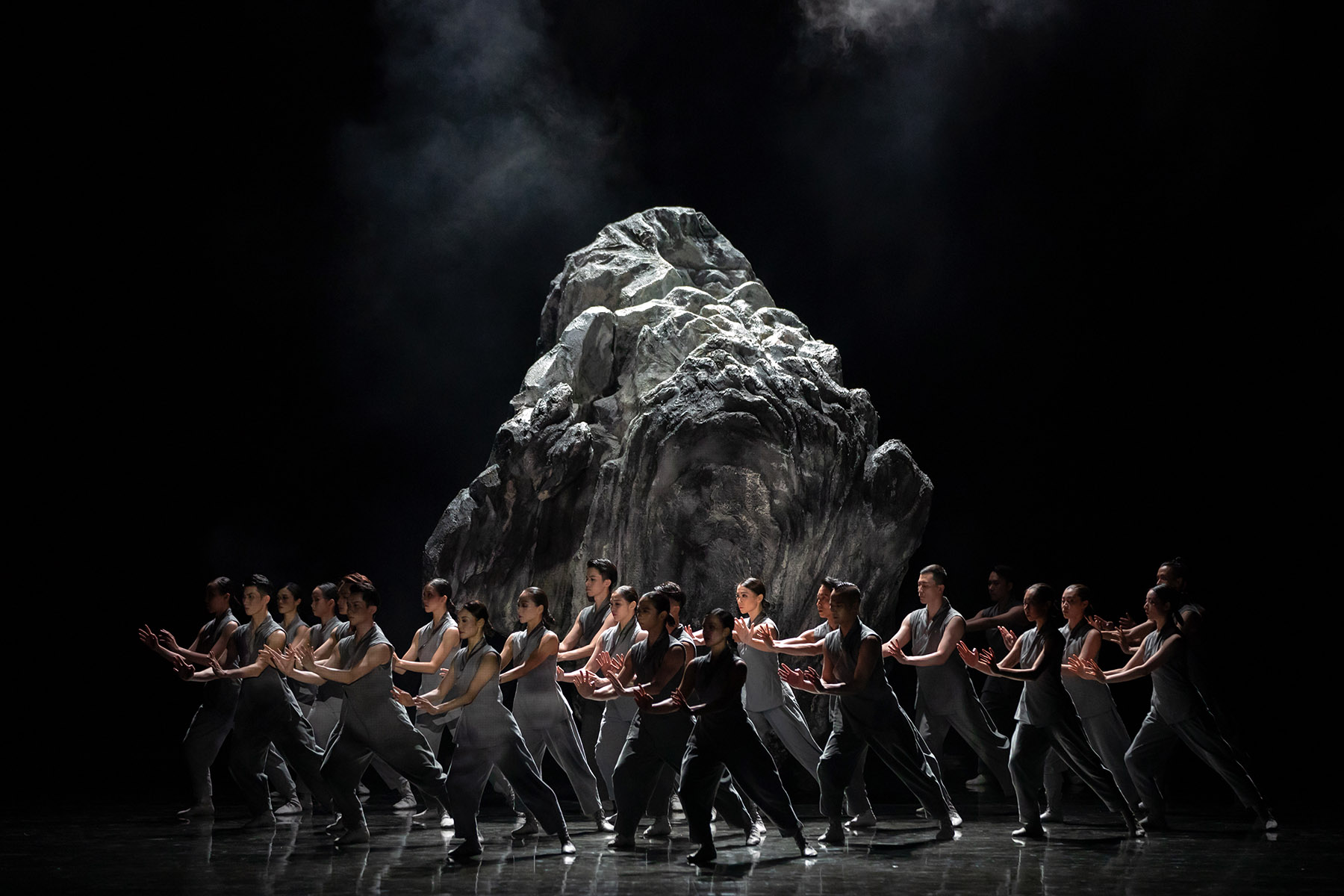
Reinterpreting tradition
Dance critic William Chan applauds HKDance’s 2018 move to “open its doors to interested company members, as well as others, inviting them to take lessons in four styles of Southern Chinese martial arts”.
According to Mok Kin-wai, a scholar of Chinese martial arts and a professor at the Hang Seng University of Hong Kong’s Department of Art and Design, HKDance’s research on martial arts has unearthed historical facts that are crucial to understanding the physical aspects of martial arts, thus aiding the process of adapting an intangible cultural heritage into a piece of creative work.
Mok, who participated in the research-based workshops, says that the dancers were encouraged to be acutely aware of their own bodies during the practice sessions, with the result that when it was their turn to choreograph, each of them interpreted the movements they were taught in a unique way.
Ong Tze-shen, a principal dancer at HKDance, has a prominent role in Kung Fu Artistry. He believes that Chinese dance has its roots in the enduring traditions of Chinese martial arts and philosophy, and that HKDance is helping to renew these fundamental, but often forgotten, connections between them.
Mok is particularly fond of Convergence. For him, it exudes a distinctive aesthetic, characterized by agility, spiritual acuity, dynamic movement, moments of stillness, speed, strength, vital energy, equilibrium, and gravity.
Chan’s top pick is Shan Shui: An Ode to Nature, the company’s first production based on findings from its research project: “Although this piece may not be perfect and does not directly incorporate martial arts as a theme, for me the power of the ensemble moving slowly in unison was memorable.”
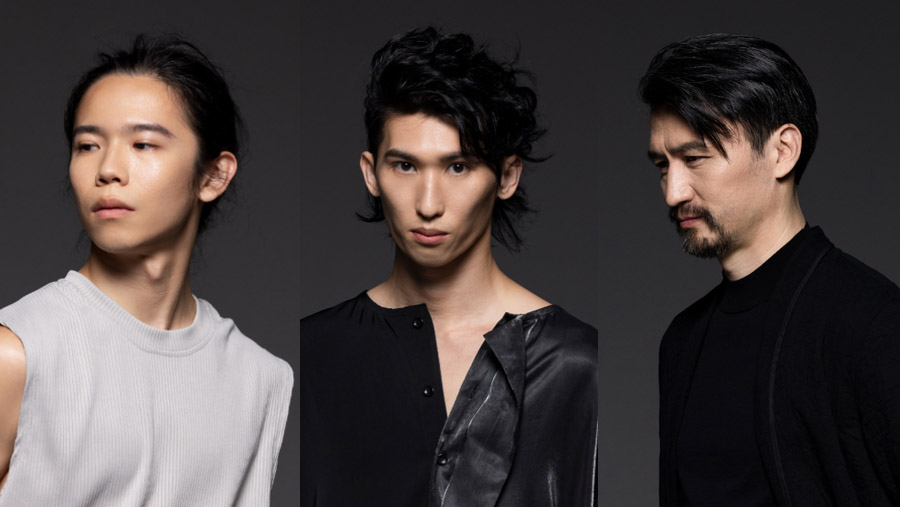
A liberating enterprise
HKDance is certainly not the first, and nor the only, company to stage Chinese martial-arts-based dance productions. Mok mentions the Tao Dance Theater from Beijing, which has staged a number of cross-genre productions, including one that saw a fusion of Chinese martial arts with postmodern American dance. He rates Moon Water and Cursive, produced by Cloud Gate Dance Theatre of Taiwan, “iconic performances” in this genre.
Zhou Liya and Han Zhen deserve recognition for creating a cinematic experience in Wing Chun (2022), produced by the Shenzhen Opera and Dance Theatre. Based on the story of Yip Man, a grandmaster of the eponymous style and Bruce Lee’s teacher, Wing Chun has become a sensation, widely performed across the Guangdong-Hong Kong-Macao Greater Bay Area and beyond.
ALSO READ: A punch of kung fu culture
Mok, however, argues that HKDance’s martial-arts-based series stands out from the rest, being the product of deep digging into the methodology of the martial arts form — in a way that makes it possible to explore its potential both “within and beyond the heritage culture”.
“It’s about setting the dancer’s body free from their usual habitus and embracing the potential of accepting new forms of art,” he adds.
Yang believes that the cross-genre approach will significantly benefit young dancers’ training at HKDance. “It will help them grow and acquire new knowledge. In the arts, work and learning are inseparable, and it’s important to stay open to new ideas,” he says.
“We hope to spark curiosity and broaden people’s perceptions of what dance can be. I’m always mindful of its potential positive impact on society. With Kung Fu Artistry, I hope to continue sharing Bruce Lee’s spirit with the world.”
If you go
Kung Fu Artistry — Bruce Lee’s No Way as Way
Dates: Through Dec 7
Venue: Grand Theatre, Hong Kong Cultural Centre, 10 Salisbury Road, Tsim Sha Tsui
www.hkdance.com/en/performance/kung-fu-artistry


